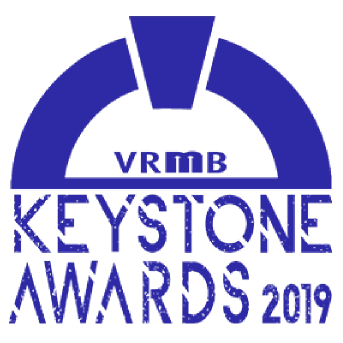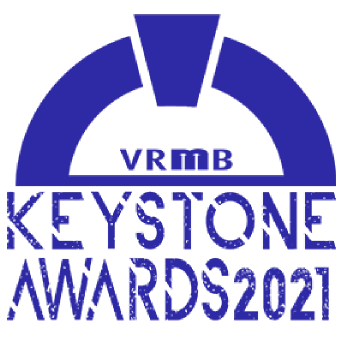Allie Shaw researched rental home security statistics as well as crime reports to find the best solutions in keeping your home secure. She is a freelance writer for multiple publications and is an expert in all things home and tech.
As a landlord, it’s easy to overlook home security, but this oversight can cost you if there’s a break-in. Many states have laws that hold the building owner responsible for damages caused by a break-in, which means it’s in your best interest to keep your rental home secure.
These home security tips can help you avoid any issues associated with a break-in, all while enhancing the safety and security of your renters. Rental home security statistics.
Unfortunately, rental properties are disproportionately targeted for burglaries and home invasions. Renters are 85% more likely to be victims of a home burglary than homeowners, making home security an even more critical issue if you own a rental property.
Having a home security system can significantly deter would-be burglars. Homes with no security systems at all are 300% more likely to be broken into, as the majority of thieves check to see if there’s a home security system before they break into a home. Burglaries can also be a major liability for the well-being of your tenants since 7.2% of burglaries result in injury.
How burglaries are likely to occur
Knowing the most common types of burglaries can help you effectively secure your rental property. According to the FBI Uniform Crime Reporting Statistics, burglaries are a bit more likely to occur during the day than they are at night—and 95% involve forceful entry with basic hand tools, often resulting in property damage that you, as the landlord, will be responsible for.
Most burglars will use the front door, a first-floor window, or the back door as their point of entry, so these areas warrant special attention.
Securing your rental property
Fortifying your rental property is the best way to reduce your odds of a break-in. Installing a home security system can definitely help, but some basic home safety precautions can go a long way toward making your home less of a target, as well as making your renters feel more comfortable.
Secure the exterior of your property
The first and simplest step in preventing a home invasion is to make your property less appealing to thieves. Overgrown exterior vegetation, enclosed porches, and other structures provide cover for thieves to gain entry through a door or window. By removing overgrown plants and unnecessary clutter around your home, you’ll make it significantly more difficult for a thief to break in without drawing attention from neighbors or passing vehicles.
Additionally, make sure that closed porches are locked to keep burglars from using them as cover.
Secure your doors
The front door is the most common entry point, making it the first line of defense for your rental property. Solid-core wood doors or metal security doors provide the most protection during a break-in. A deadbolt and a heavy-duty strike plate that screws deep into your doorframe can also prevent anyone from breaking into your property by force.
Once you’ve installed a solid door or locks, remember to take extra precautions between renters. As a landlord, replacing the locks between tenants is one way to ensure your rental property is secure.
In the worst-case scenario, tenants can make copies of their key to rob the next occupants, so you should replace the locks between each renter. And stipulate in the lease that your renters will be responsible for replacing locks if a key is lost.
Secure your windows
It’s difficult to ensure your tenants are keeping all windows locked and secured while they’re away. Installing a wood block or dowel into the frames of your windows can keep them from being slid open from the outside, adding an additional layer of security for these common entry points.
In areas with extremely high crime, adding decorative window bars can provide complete security against a break-in, though some tenants may not appreciate the appearance.
Installing a home security system
Above all else, a home security system provides the greatest protection against a break-in. It can be the most cost-effective way of securing your property, and modern security systems can offer extra peace of mind with remote property monitoring.
Types of home security systems
There are different kinds of home security systems with various levels of protection. Basic security systems use sensors on doors and windows to detect unauthorized entry. More advanced systems may use indoor and outdoor cameras to deter break-ins.
The highest tier of home security systems uses additional smart home equipment such as smart locks, smart thermostats, and home automation tools.
Basic home security systems
As a landlord, a basic security system is often the most affordable method of safeguarding a rental property. These systems use sensors to detect entry and usually include an alarm system to alert renters and nearby neighbors when a burglary takes place—and an alarm is usually enough to scare off a burglar.
Smart home security systems
If you’re looking to maximize the protection of your rental property, smart home security systems offer the highest level of protection and offer numerous features that allow you to remotely monitor your property when your tenants are away. These features can also help you market your rental property to potential tenants: added security is always appealing.
Smart locks: Smart locks are ideal for rental properties—they simplify the process of changing locks and keys. A smart lock may require a code from your tenant’s smartphone as the “key” or use a keypad code for entry. When your tenant moves out, you’ll only need to change the code instead of replacing the lock, minimizing your costs as a landlord. Smart locks can also lock automatically, so even if your tenants forget to lock up when they leave, the property will stay secure.
Smart security sensors: Smart home systems often include additional layers of protection beyond a simple door or window sensor. Smarter sensors like glass break, flood and freeze, smoke, and carbon monoxide detectors can alert you to a range of home security issues. And as a plus, smart home systems almost always include notifications to your smartphone, alerting you to any potential issues in real-time.
Rental properties without a home security system are easy targets for burglars, leaving you liable for damages to your property. Investing in your home security system before a break-in occurs can pay for itself in avoided costs down the road. Smart home systems also offer additional conveniences for landlords, giving you and your renters peace of mind.








